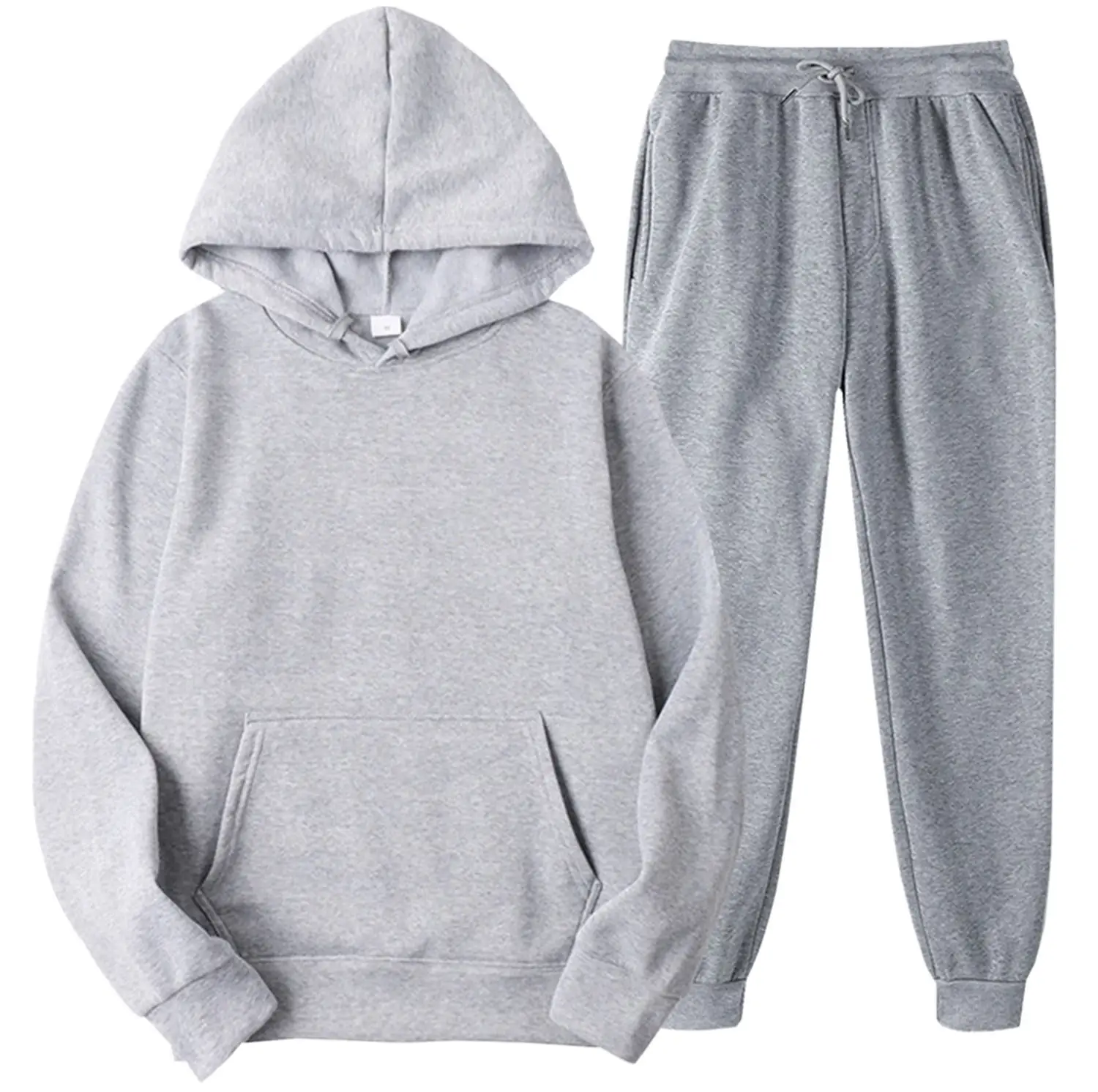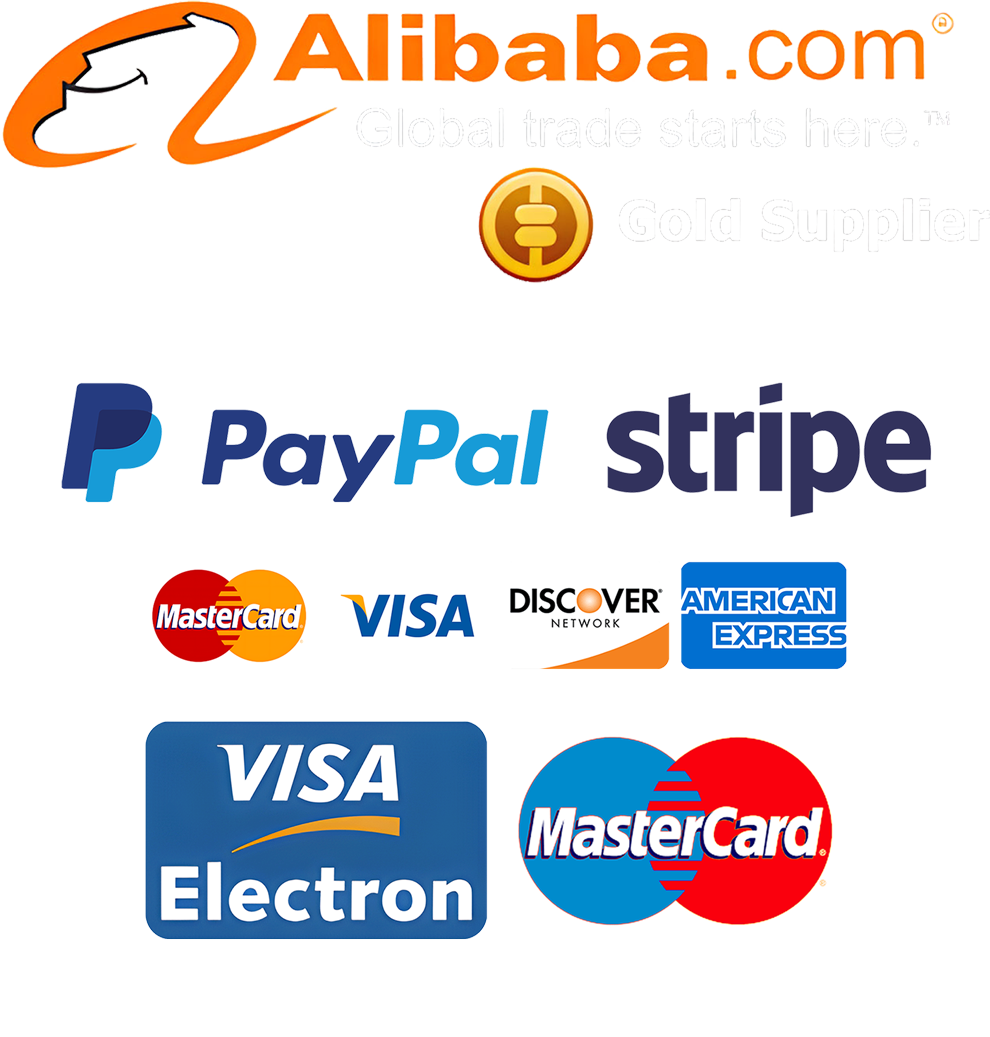Mga Estratehiya sa Mapagkukunan ng Materyales na Tela para sa mga Tagagawa ng Kasuotan
Paggawa ng Mga Programa sa Pagbili ng Mga Pabrika ng Tela na Nakabatay sa Kalikasan
Kapag nais ng mga kumpanya na maging eco-friendly sa kanilang pagbili ng tela, kailangan nilang itakda ang malinaw na mga layunin sa pagpapanatili at maging pamilyar sa mga internasyonal na sertipikasyon tulad ng GOTS at OEKO TEX. Ang pagtanggap sa mga pamantayang ito ay nagdudulot ng tunay na benepisyo sa buong supply chain. Ang mga sertipikasyon ay nagsisiguro na ang mga tela ay pumasa sa mahigpit na pagsusuri sa epekto sa kapaligiran at kalagayan ng mga manggagawa, kabilang ang pakikipagtulungan sa mga grupo na nagbibigay ng tunay na organikong koton. Ang pakikipagtulungan nang diretso sa mga lokal na magsasaka ay nakatutulong upang makapag-ugnayan sa mga nagsisibakal ng organikong koton at hemp, na sa kabilang dulo ay sumusuporta sa lokal na agrikultura at biodiversity. Mahalaga ang pagkakaroon ng maayos na talaan tungkol sa mga pagsasanay na ito para sa paraan ng pagtingin ng mga customer sa brand. Kapag binabahagi ng mga negosyo ang mga kuwento tungkol sa pinagmulan ng kanilang mga materyales at mga pagpapabuti sa kapaligiran na kanilang isinagawa, ito ay nakaaapekto nang direkta sa mga mamimili ngayon na lubos na nagmamalasakit sa pagpapanatili. Lahat ng mga paraang ito ay hindi lamang nagpapaganda sa imahe ng isang kumpanya bilang responsable sa kapaligiran kundi nagtatayo rin ng matatag na tiwala sa mga taong binibigyan ng prayoridad ang pagiging eco-friendly sa kanilang mga pagbili.
Pag-unlad ng Etikal na Pakikipagtulungan sa Supplier para sa Material Traceability
Ang pagtatayo ng magagandang relasyon sa mga supplier na sumusunod sa mga etikal na kasanayan ay nakatutulong sa mga kumpanya na masubaybayan kung saan nagmula ang mga materyales at nagpapaganda ng kalinawan at katapatan sa buong supply chain. Kapag ang mga negosyo ay naglalagay ng malinaw na mga patakaran sa kanilang kontrata tungkol sa uri ng pag-uugali na inaasahan nila mula sa mga supplier, ito ay talagang epektibo upang mapanatili ang lahat sa pagsunod sa mga berdeng kasanayan. Sa usapin naman nito, pwede bang tulungan ng isang teknolohiya tulad ng blockchain upang lalong mapaliwanag ang proseso? Ang teknolohiya sa likod ng blockchain ay lumilikha ng isang permanenteng talaan na hindi maaaring baguhin, na nagpapakita nang eksakto kung paano pinagdadaanan ng mga hilaw na materyales ang bawat hakbang hanggang maging tapos na produkto. Ang lahat ng kasangkot ay maaaring makapagsuri ng impormasyong ito anumang oras. Kinakailangan din ng mga kumpanya na magsagawa ng regular na pagsusuri upang matiyak kung ang mga supplier ay sumusunod ba sa mga etikal na pamantayan at legal na kinakailangan. Hindi lamang ito isang papeles na proseso, dahil talagang pinapalakas nito ang responsibilidad sa iba't ibang bahagi ng produksyon. Ang pagtuon sa ganitong uri ng etikal na ugnayan ay nagreresulta sa mas matalinong pagpili ng mga pinagmumulan, na talagang mahalaga dahil ang mga modernong customer ay gustong malaman na ang kanilang mga binili ay hindi nagdudulot ng pinsala sa kapaligiran o sa mga tao sa kahit anong paraan.
Pagsasama ng Teknolohiya sa Pagbili at Produksyon ng Telang Pambahay
Blockchain para sa Transparenteng Pagsunod sa Suplay ng Kadena
Ang paraan kung paano nakakaapekto ang blockchain sa mga suplay na kadena ay talagang kamangha-mangha, lalo na dahil nagpapahintulot ito sa mga kumpanya na subaybayan kung saan nagmula ang mga materyales sa real time. Kunin ang tela bilang halimbawa. Mahalaga nang husto ang pagkakaroon ng tiyak na kaalaman kung ano ang ginagamit sa mga damit sa kasalukuyang panahon. Gamit ang teknolohiya ng blockchain, ang mga manufacturer ay maaaring sundan ang kanilang mga produkto mula pa sa mga hilaw na materyales hanggang sa huling produkto sa mga istante ng tindahan. Ang mga kilalang brand ay nagsimula nang umangkop sa paraang ito hindi lamang para bawasan ang pekeng kalakal kundi pati na rin upang maging higit na responsable sa pagmumulan ng kanilang mga sangkap. Ang mga konsyumer ay karaniwang nagtitiwala nang higit sa mga kumpanya kapag alam nilang ang kanilang mga damit ay hindi ginawa sa ilalim ng mga mapanghuhusgang kondisyon. Bukod dito, kung sakaling may problema sa isang produkto, ang mga recall ay naging mas madali dahil naitala naman ang lahat sa buong proseso. Ang mga kumpanyang gumagamit ng blockchain ay nakakakuha ng gilas laban sa mga kakompetensya na umaasa pa rin sa tradisyonal na papel na trail.
Pag-optimize ng Kahusayan sa Produksyon sa Pamamagitan ng Pagbabago sa Proseso
Mga Teknik ng Lean Manufacturing para sa Pagbawas ng Basura
Ang lean manufacturing ay nagbabawas ng oras at mga hindi nagagamit na mapagkukunan sa pamamagitan ng paggawa ng produksyon na mas maayos at mabilis. Ang diskarte ay nanggaling mismo sa shop floor ng Toyota noong unang panahon, kung saan natuklasan nila kung paano gumawa ng kotse nang mas mahusay habang binabawasan ang pag-aaksaya ng materyales. Kapag naglalapat ang mga kumpanya ng lean methods, madalas silang nagbabawas sa mga materyales na natitira at tinatanggal ang mga dagdag na hakbang na hindi talaga kailangan sa assembly line. Mahalaga rin na ang mga kawani ay wastong na-train. Ang mga manggagawa na nakauunawa sa sistema ay kayang tukuyin kung saan nabubulok ang proseso at makapagmumungkahi ng mga solusyon na talagang gumagana. Nililikha nito ang isang kapaligiran kung saan lagi silang naghahanap ng paraan para mapabuti ang mga ginagawa, hindi lang minsan kundi lagi bilang bahagi ng pang-araw-araw na operasyon.
Mga Sistemang Pampotpot ng Tela gamit ang Automation para sa Katumpakan
Ang pagputol ng tela ay naging mas mahusay dahil sa automation na nagdudulot ng tumpak at mabilis na paggawa sa mga textile manufacturing shop. Ang mga makina ay nakababawas sa basurang materyales dahil sila ay sumusunod sa eksaktong disenyo nang walang pagkakamali ng tao. At pagdating naman sa pera, nakikita ng mga kompanya ang tunay na bentahe kung kailan nababawasan ang basura na napupunta sa mga landfill at nababawasan ang mga pagkakamali na kailangang ayusin. Ang bilis ay importante rin ngayon. Ang mga automated cutter ay nakakaputol ng ilang yarda ng tela bawat minuto kumpara sa kakayahan ng tao nang manu-mano. Bukod pa rito, hindi na kailangan pang hawakan ng mga manggagawa ang mga matalim na siper sa buong araw, na nagpapababa sa bilang ng mga aksidente sa shop floor. Ito ay makatutulong sa mga may-ari ng negosyo na mapanatili ang kanilang kita habang pinoprotektahan ang kanilang mga empleyado mula sa mga sugat at mga injury dulot ng paulit-ulit na paggalaw na karaniwang nangyayari sa tradisyonal na paraan ng pagputol.
Tibay ng Suplay sa Pagmamanupaktura ng Tekstil
Mabilis na Mga Estratehiya sa Paggawa Para sa Nagbabagong Halaga ng Materyales
Kapag ang mga kumpanya ay umaangkop sa mga paraan ng agile na pangangalap, mas maayos nilang mahahawakan ang mga hindi inaasahang pagbabago sa presyo ng mga materyales at mga nagbabagong pangangailangan sa pamilihan sa pamamagitan lamang ng pagkakalat ng kanilang pinagmumulan ng materyales mula sa iba't ibang bahagi ng mundo. Ang pagtatayo ng mga koneksyon sa maraming supplier sa halip na umaasa sa isa o dalawa lamang ay nagpapalakas nang husto sa kabuuang supply chain, lalo na sa mga hindi inaasahang pangyayari tulad ng pagkaraan ng pabrika o mga pagkaantala sa pagpapadala. Ang mga matalinong negosyo ay regular na nagsusuri sa mga nangyayari sa pamilihan upang maayos-ayos ang kanilang mga estratehiya sa pagbili habang nagbabago ang mga kondisyon. Ang pagtingin sa mga tunay na datos mula sa industriya ay nagpapakita na ang ganitong paraan ay nagpapanatili ng higit na pagtitiwala sa gastos habang tinitiyak na maayos ang operasyon kahit sa mga biglang pagbabago sa pamilihan.
Maramihang Vendor Ecosystems para Mapabawasan ang Kakulangan
Ang pagtatayo ng isang ecosystem ng maramihang vendor ay binabawasan ang epekto ng kakulangan at pagkagambala ng supplier, kaya nababawasan ang kahinaan sa mga pagkaantala. Ang malakas na pakikipagtulungan ay nagpapalakas ng posisyon sa negosasyon, na nagseseguro ng kanais-nais na mga tuntunin. Ang mga pakikipagtulungang ito ay nagbibigay ng oportunidad na makalinang ng komprehensibong solusyon para sa mga bottleneck sa chain ng suplay. Kahit noong panahon ng mga pagkagambala, nananatiling patuloy ang operasyon nang hindi kinakailangang ihal sacrifice ang kalidad o mga deadline sa paghahatid.
Pamamahala sa Kakulangan ng Telang Pang-2024: Mga Proaktibong Solusyon
Paggamit ng Alternatibong Materyales Sa Panahon ng Pag-unlad ng Sample
Nang mababa na ang suplay ng tela, maraming kompanya ang lumilingon sa mga alternatibong materyales habang nasa yugto sila ng paggawa ng sample. Ang mga disenyo ng kasuotan ay gumagamit na ng mga opsyon tulad ng lyocell mula sa kahoy na pulbos at iba't ibang uri ng recycled polyester blends. Ang mga pagpipiliang ito ay hindi lamang nakatutulong upang mabawasan ang epekto sa kalikasan kundi natutugunan din nito ang mga kinakailangan sa visual na inaasahan ng mga kliyente para sa kanilang koleksyon. Ang pagbabagong ito ay nakatipid din ng libu-libong piso sa ilang brand sa mga gastos sa produksyon, lalo na kung pagsasamahin ito sa mga mas mahusay na kasangkapan sa paghula ng uso na nagtutugma ng mga materyales na nakabatay sa kalikasan sa mga nais ng mga konsyumer sa susunod na panahon. Para sa mga tagagawa ng tela na nakakaranas ng problema sa suplay chain, ang mga alternatibong ito ay nagpapakita ng mga oportunidad para sa epektibong paglutas ng problema habang pinapalawak ang mga creative boundaries sa mga teknik ng paggawa ng damit.
Pagpaplano ng Contingency para sa Mga Pagka-antala sa Global na Logistika
Ang contingency planning para sa mga pagka-antala sa logistika ay nakikilala ang mga panganib, nagtatatag ng mga protocol sa komunikasyon, at lumilikha ng mga alternatibong ruta sa logistika. Ang GPS tracking at logistics management software ay nagpapabuti sa visibility ng supply chain, na nagbibigay-daan para mabilis na tugunan ang mga pagka-antala. Ang mga hakbang na ito ay nagbabawas sa epekto sa ekonomiya at nagpapanatili ng tibay ng supply chain, upholding ang operasyon at mga obligasyon sa paghahatid sa isang hindi tiyak na kalagayan ng ekonomiya.
Mga Tendencya sa Nearshoring sa Produksyon ng Telang
Mga Sentro ng Produksyon sa Rehiyon na Nagpapababa ng Lead Times
Binabawasan ng nearshoring ang lead times, na nagpapahintulot ng mabilis na tugon sa merkado. Ang pagbawas ng distansya sa pagpapadala ay nagpapababa ng carbon footprint, na umaayon sa mga layunin sa sustainability. Makatutuhanan ang economic sense ng nearshoring at ito ay isang responsableng pagpipilian na naaayon sa mga layunin sa kapaligiran sa pamamagitan ng maayos na pagpapakilala ng mga bagong produkto.
Kaso ng Pag-aaral: Epektibidad ng US-Mexico Apparel Corridor
Ang US-Mexico apparel corridor ay isang halimbawa ng pagtaas ng kahusayan sa pamamagitan ng nearshoring. Ang mahusay na mga kasunduan sa kalakalan at kalapitan ng heograpiko ay nagpapabilis ng produksyon. Ang pagpapabuti ng oras ng tugon at pamamahala ng imbentaryo ay nag-aalok ng mas mabilis na oras ng paghahatid at nadagdagan na kakumpitensya, na nagpapakita ng mahalagang papel ng nearshoring sa pagmamanupaktura ng kasuotan.

Pagsusuri sa Mga KPI ng Sourcing ng Telang para sa mga Manufacturer
Mga Sukat: Mula sa raw material yield hanggang sa production throughput
Ang pagsubaybay sa mga KPI tulad ng raw material yield at production throughput ay nagpapahusay ng operational efficiency. Tinitiyak ng mga metriks na ito ang epektibong pamamahala ng gastos at kontrol sa kalidad. Ang patuloy na pagpapabuti ay nag-uugnay ng performance sa mga layunin, pinapanatili ang kalidad at kahusayan. Mahalaga ang pagsubaybay sa KPI para sa pagbawas ng gastos at mapanatili ang kompetisyon.
Pagbabalance ng cost-efficiency at quality benchmarks
Ang pagbabalance ng cost-efficiency at quality benchmarks ay hindi pumapayag na mababa ang kalidad ng final product. Ayon sa mga natuklasan, ang matagumpay na estratehiya ay nagsasangkot ng pagtatakda ng malinaw na benchmarks at pagpapanatili ng kalidad kahit may presyon sa gastos. Ang mga inobatibong solusyon ay tumutulong sa pagpapanatili ng kalidad habang binabawasan ang mga gasto, upang matugunan ng brand ang inaasahan ng merkado nang hindi nasasaktan ang reputasyon.
Mga FAQ
Ano ang GOTS at OEKO-TEX certifications?
Ang GOTS at OEKO-TEX ay global certifications na nagsisiguro na ang mga tela ay sumusunod sa mga environmental at social requirements.
Paano ang blockchain nagpapalakas ng transparensya ng supply chain?
Nag-aalok ang Blockchain ng real-time, transparent tracking ng mga materyales mula sa pinagmulan hanggang sa konsumidor, na nagpapabuti ng accountability.
Bakit mahalaga ang AI sa pamamahala ng imbentaryo?
Sinusuri ng AI ang datos ng nakaraang benta upang mahulaan ang demand, mapabuti ang pamamahala ng imbentaryo at mabawasan ang mga gastos.
Paano nag-aambag ang nearshoring sa kalinisan ng kapaligiran?
Napapababa ng nearshoring ang lead times at distansya ng pagpapadala, kaya nababawasan ang carbon footprints at tinutulungan ang sustainability.
Ano ang papel ng mga sukatan sa pagbili ng tela?
Ang mga sukatan tulad ng raw material yield at production throughput ay tumutulong sa mga manufacturer na mapabuti ang epektibidad at mapanatili ang kalidad.
Talaan ng mga Nilalaman
- Mga Estratehiya sa Mapagkukunan ng Materyales na Tela para sa mga Tagagawa ng Kasuotan
- Pagsasama ng Teknolohiya sa Pagbili at Produksyon ng Telang Pambahay
- Pag-optimize ng Kahusayan sa Produksyon sa Pamamagitan ng Pagbabago sa Proseso
- Tibay ng Suplay sa Pagmamanupaktura ng Tekstil
- Pamamahala sa Kakulangan ng Telang Pang-2024: Mga Proaktibong Solusyon
- Mga Tendencya sa Nearshoring sa Produksyon ng Telang
- Pagsusuri sa Mga KPI ng Sourcing ng Telang para sa mga Manufacturer
- Mga FAQ



